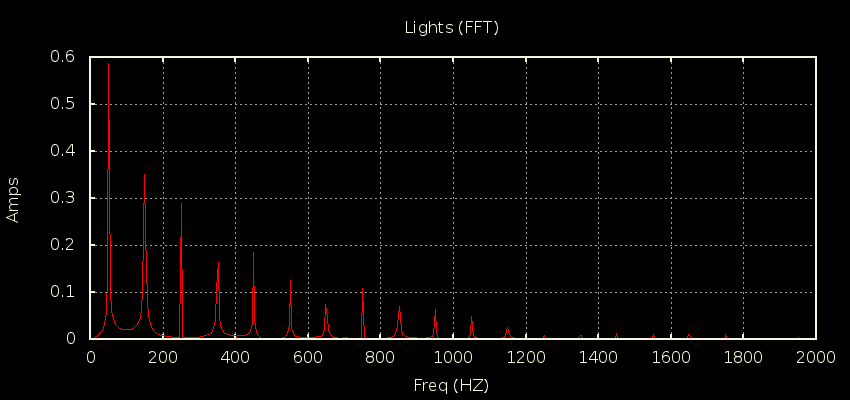To illustrate the “lots of maths that adds up to zero” point, I’ll dust off the pic of my most distorted channel made up of a boat load of CFLs:
My monitor measures that out to 2kHz:
Each of those blips represent a bit of energy that needs to be measured, although a lot less than it appears in the graph. That relatively large blip at 150Hz for instance gets multiplied by the equivalent 150Hz blip on the V signal which is much much smaller because V is typically much less distorted. So all those blips (bar the first) get seriously dampened once you multiply them by their corresponding V blip at that frequency.
With that V attenuation in mind (but not shown), you can see there really is not much to measure by the time you get out to 2kHz - even without the attenuation there’s bugger-all out there. With your 38000 samples/sec your equivalent graph goes all the way out to 19kHz, so you’re really just adding in a whole bunch of zeroes.

